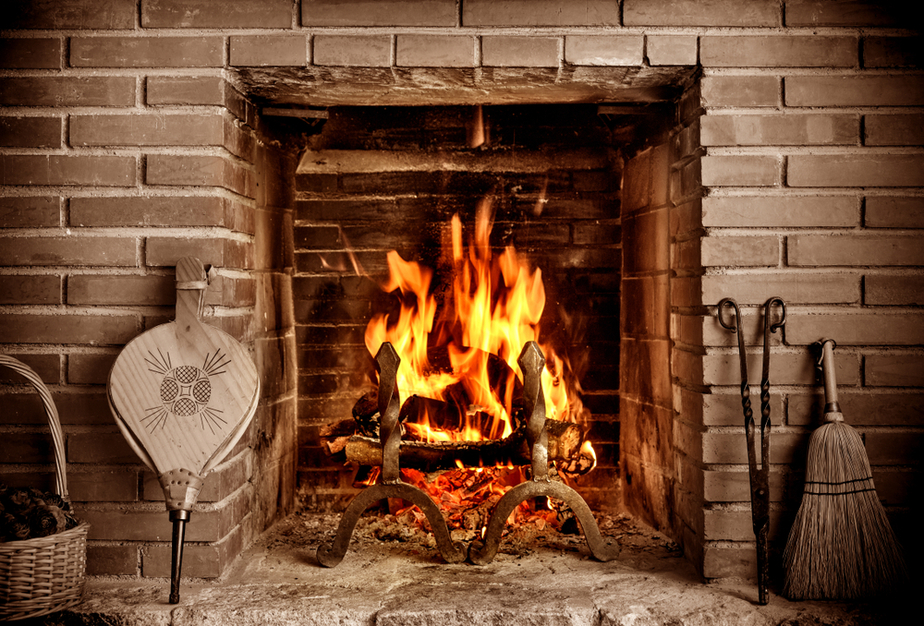A chimney has many parts that must be in the proper order to ensure optimum efficiency as well as your family’s and property’s safety. As any well-educated chimney sweep will tell you, there’s the smoke chamber which serves to guide smoke and noxious gases out of the fireplace and into the flue; which then guides the smoke up and out of the house into the open. Then you have the damper that you must not forget to open when lighting a fire and close when the chimney is not in use.
Lastly, there is the chimney flashing. For those who live in areas prone to harsh weather like storms, chimney flashing is the best defense as long as it is solid and secure. A missing or damaged chimney flashing can only be noticed and fixed by a professional chimney sweep, and that is why annual inspection is crucial.
What is Chimney Flashing?
Chimney flashing is the sheet metal installed for the purpose of ensuring that the connection between the chimney and roof is watertight. It seals the space between your roof and your chimney. Chimney flashing keeps rain and the water from melting snow from leaking into your house. The corners of your chimney are particularly prone to such damage. If left unchecked, these leaks can result in huge damages that can lead to very costly repairs.
Reasons from a Chimney Sweep on why flashing may need to be replaced
- If the flashing is missing as a result of erosion or it has been worn off by effects of adverse weather.
- When the shingles on your roof are being replaced.
- The flashing is rusted since most are made of galvanized steel, aluminum or copper.
- The flashing has been covered up with roofing tar, thus reducing its effectiveness.
How to Fix It
 To ensure your flashing is secure and solid, the first line of defense is to have your chimney cleaned and inspected by a chimney sweep annually. This helps in sorting out the flashing problem before it deteriorates into a major issue.
To ensure your flashing is secure and solid, the first line of defense is to have your chimney cleaned and inspected by a chimney sweep annually. This helps in sorting out the flashing problem before it deteriorates into a major issue.
When repairing the flashing, the first step is usually to clean out any debris or dead leaves from the gap between the flashing and chimney; remove the hardened roofing cement; apply fresh cement then reattach the flashing with masonry nails.
These might seem as easy steps that you can DIY, however, just to avoid problems that might arise if it is not done correctly, it is best left for a professional chimney sweep.
Metals from which flashing is made
- Galvanized steel
- Some chimney flashing is made of galvanized steel. But for this material to work effectively, there should be a thick coating of zinc. However, such coatings tend to crack when the galvanized steel is folded. That is why we do not recommend galvanized steel as a flashing material.
- Aluminum
- Some flashings are also made from aluminum. However, when fresh mortar is applied to aluminum, the alkalis can corrode the aluminum. That is why it is not the best material for flashing.
- Copper
- This metal is able to withstand the high temperatures from the burning below the chimney and is durable. It also handles moisture quite well. Copper can be safely and firmly fixed in a fresh mortar and does not deteriorate in saturated and hardened mortar. However, the downside is that copper can stain the chimney crown or the bricks.
- Stainless steel
- It remains the best material for chimney flashing. Stainless steel bars moisture is resistant to heat and is not easily corroded. A chimney sweep will know the exact thickness and type of stainless steel to use for an effective flashing system.
Why the proper installation of flashing is important
Proper installation of the flashing system will prevent water from leaking into a chimney. However, there are some things that must be taken into consideration during installation, and that is why we insist that chimney flashing should be done by a certified chimney sweep.
For instance, the flashing should extend fully to the outside and form a drip for water to run off rather than form a pool. This is to ensure water cannot get behind the inner layer of the flashing. The flashing and the counter flashing must be properly layered.
Also, the flashing should be continuous and any breaks or bends in the flashing metal layers must be completely sealed. Our chimney sweeps are well trained to take careful measurements to ensure the flashing pieces will fit properly and be a watertight seal between your roof and chimney. We will also install customized flashing made from the most appropriate material that will best protect your chimney from water penetration.


Recent Comments